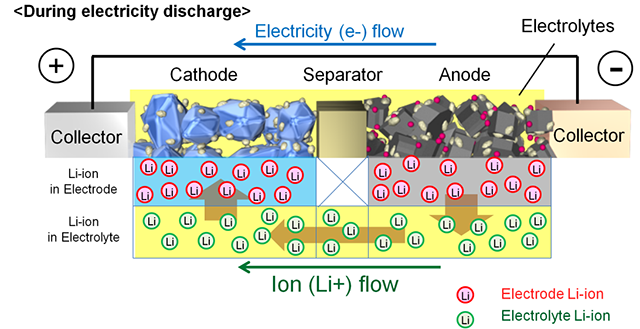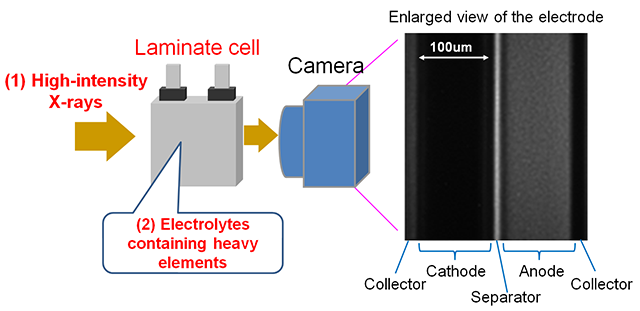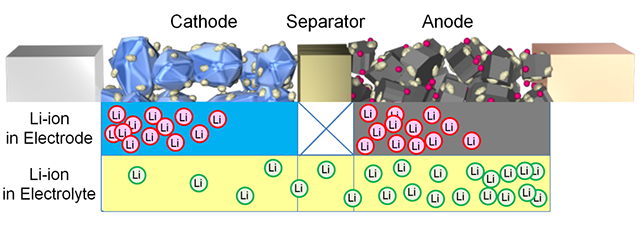The Tacoma certainly didn’t become America’s best-selling mid-size pickup for 10 years running by taking it easy. The new generation introduced last year brought a number of improvements, including the use of high-strength steel to help enhance rigidity and overall strength; a powerful and efficient 278-horsepower 3.5-liter Atkinson-cycle V6 with VVT-iW (Variable Valve Timing with Intelligent Wider Intake) and Toyota’s D-4S technology; updated suspension tuning; and the model’s most comfortable and functional passenger cabin ever.
In addition to welcoming the new 2017 TRD Pro, the 2017 Tacoma gets revised value-loaded optional amenity packages for SR5 models.
Brute Strength on Multiple LevelsExtensive use of high-strength steel in the frame and hot-stamped ultra-high strength steel in the body give the Tacoma a strong foundation for hard work, hard play, and durability. All Tacoma models are equipped with double wishbone coil-spring front suspension and leaf spring rear suspension with staggered outboard-mounted gas shocks. The refined setup delivers a smooth on-road ride, yet also bolsters the truck’s off-road driving capability.
“Strong” is also an apt descriptor for the Tacoma’s two available powertrains. Its entry-level 2.7-liter DOHC four-cylinder with VVT-i produces 159 horsepower and 180 lb.-ft. of peak torque. Those wanting extra oomph can opt for the segment-first Atkinson-cycle 3.5-liter V6 featuring the Toyota’s innovative VVT-iW technology. The engine also utilizes Toyota’s D-4S injection system which incorporates both direct injection and port fuel injection. Along with its 278 horsepower, the V6 makes 265 lb.-ft. of peak torque.
The engines can be teamed to a six-speed Electronically Controlled Automatic Transmission with intelligence (ECT-i) or a manual transmission (six-speed for V6 applications; five-speed for four-cylinder applications). When equipped with an optional V6 Tow Package, the Tacoma can pull up to 6,800 lbs. (per the SAE J2807 tow standard).
High Style, High FunctionTaking inspiration from Toyota’s legendary desert race trucks, CALTY designers in Newport Beach, California and Ann Arbor, Michigan helped give the new-generation Tacoma an unmistakably athletic and stylish identity that retains everyday functionality and ruggedness. The overfenders, for example, look tough but also serve to accommodate the suspension’s generous wheel travel. And the truck’s high-lift image reflects its go-anywhere capability. Seven available wheel designs range in diameter from 16 to 18 inches.
Tacoma’s chiseled face is anchored by a bold, hexagonal grille and a tall, muscular hood. Its slim, projection beam headlights can be outfitted with available LED daytime running lights. The tailgate adds an easy lowering feature, which allows it to slowly retract, preventing it from slamming down. An available factory-installed tri-fold hard tonneau cover secures gear when you’re away.
The Tacoma’s exterior color palette includes Black, Blazing Blue Pearl, Barcelona Red Metallic, Inferno, Quicksand, Magnetic Gray Metallic, Cement (TRD Pro only), Silver Sky Metallic, and Super White.
Its tough exterior is complemented by an interior that’s simultaneously comfortable and functional. Soft-wrapped trim and metallic accents set the stage for a high-quality look and feel, underscored by an array of available premium features, including:
- Qi wireless charging
- Smart key with push-button start
- Leather-trimmed seats
- Power tilt/slide moonroof
- Dual-zone automatic climate control
- Enhanced touchscreen audio
- Blind-Spot Monitor with Rear Cross Traffic Alert
In addition to offering premium features, the Tacoma is quiet thanks to enhanced door seals, a multi-layer acoustic windshield, sound-absorbing headliner, and a floor silencer pad. Interior storage is maximized in Access Cab models with fold-up rear seats and under-seat storage. Double Cab models feature 60/40 split rear seats with adjustable headrests and under-seat storage.
31 Reasons to Love TacomaThe 2017 Tacoma is available in 31 models based on two cab types, the extended Access Cab and four-door Double Cab, each available in 4x2 or 4x4 configurations. Access Cab models offer under-seat rear storage space, and their fold-up seat cushions maximize carrying space. Double Cab models feature 60/40 split rear seats with adjustable headrests and under-seat storage.
Tacoma is available in six model grades, each with its own purpose and unique appearance:
- Work-ready SR
- High-style, high-value SR5
- Athletic TRD Sport
- Adventurous TRD Off-Road
- Top-of-the-line Limited
- Ultimate Off-Road TRD Pro
The Access Cab models ride on a 127.4-inch wheelbase and have a 73.7-inch-long bed. The Double Cab is offered in two versions: the 127.4-inch wheelbase with a 60.5-inch bed or 140.6-inch wheelbase with the 73.7-inch bed.
Both bed styles are designed to take punishment with an inner bed made from a sheet-molded composite (SMC) deck and tough, durable walls that are 10-percent lighter than steel. The bed deck features two-tier loading and an integrated deck-rail utility system with four standard adjustable tie-down cleats.
Just about whatever you need to carry, the deck rail system can do it. It’s compatible with Genuine Toyota Accessories, including a cargo divider that locks into the rails to help keep cargo from sliding around the bed, and mini tie-downs with hooks that also help to secure cargo. An available 120V/400W power point further extends the bed’s utility.
Throne-like SeatingComfort and durability come together in Tacoma’s seating, which varies by model grade. All Tacoma’s feature a driver’s seat with adjustable lumbar support and four-way adjustable front passenger seats. The SR and SR5 grades are equipped with fabric-trimmed seats. Seating for the TRD Sport and Off-Road grades is uniquely upholstered with embossed fabric that conveys a dynamic and rugged feel. The TRD Pro comes with leather-trimmed seating plus heated front seats, and the premium Limited grade offers seats trimmed in rich leather. Seating colors include:
- SR: Fabric in Cement Gray
- SR5: Fabric in Cement Gray; Black with Caramel or Red accent stitching
- TRD Sport and TRD Off-Road: Fabric in Graphite; Black with Orange accent stitching
- Limited: Leather in Hickory
- TRD Pro: Leather in Black
The Adventure Enabler All Tacoma 4x4 models are equipped with 4WDemand part-time 4WD with an electronically controlled transfer case and Automatic Limited Slip Differential (Auto LSD). Auto LSD is an electronic, brake actuated system that functions like a mechanical limited slip differential when activated a low speeds. Tacoma TRD Sport models are equipped with sport-tuned shocks. TRD Off-Road models include an off-road tuned suspension equipped with Bilstein
® shocks.
Tacoma off-roading adventures will reach new levels of fun in the TRD Off-Road grade thanks to the addition of incredible technology. A Multi-Terrain Select system (automatic transmission only) allows the driver to choose between different types of terrain such as loose rock, or mud and sand. Each input regulates wheel spin by adjusting throttle and brake pressure to provide maximum traction on almost any terrain.
Additional off-road technology includes Locking Rear Differential, Hill Start Assist Control (HAC), clutch Start Cancel (manual transmission only), Active Traction Control, and Crawl Control. Engaging Crawl Control allows the driver to select a speed of 1-5 mph. The Crawl Control system takes over the acceleration and braking, allowing the driver to focus solely on steering.
All Tacoma models are equipped with a coil-spring double wishbone front suspension and stabilizer bar and leaf spring rear suspension with staggered outboard-mounted gas shocks. Brakes are power-assisted ventilated front disc and rear drum brakes with a tandem booster.
Optional on V6 models is the V6 Tow Package that includes a Class IV Towing Receiver Hitch, ATF Cooler (not available on manual transmission), Engine Oil Cooler, Power Steering Cooler, 130-Amp Alternator, 4- and 7-Pin Connector with Converter, and Trailer-Sway Control (TSC).
TRD Pro: The Off-Roading MasterBorn from Toyota’s long history of off-road racing success and knowhow, the TRD Pro vehicles are aimed squarely at the most dedicated adventure-seeking, off-road-loving, work-hard-play-hard enthusiasts. Toyota offers the TRD Pro models for Tundra and 4Runner, and now, for the second time, the next generation Tacoma.
You’d be hard pressed to mistake the 2017 Tacoma TRD Pro for something else. Its heritage-inspired “TOYOTA” front grille with color-keyed surround, blacked out hood scoop and graphic, color-keyed power outside mirrors with turn signal indicators, color-keyed door handles, black overfenders, and color-keyed rear bumper all distinguish it as the most adventurous grade. Available TRD Pro exterior colors includes Cement, Barcelona Red Metallic, and Super White.
The TRD Pro not only looks tough, but is designed specifically to perform in the toughest of off-road environments. Based on the Tacoma TRD Off-Road 4x4 Double Cab short-bed model with either a six-speed manual transmission (with clutch start-cancel switch) or six-speed automatic, the Tacoma TRD Pro comes ready to conquer hill and trail. In addition to 4WDemand and all traction features of the TRD Off-Road grade, the Tacoma TRD Pro adds:
- 16-inch TRD black alloy wheels
- Goodyear Wrangler® All-Terrain Kevlar®-reinforced tires
- TRD-tuned front springs with a 1-inch lift
- TRD-tuned rear suspension with progressive-rate off-road leaf springs
- FOX 2.5-inch Internal Bypass shocks tuned by TRD
- TRD Pro aluminum front skid plate
- Rigid Industries® LED fog lights
- Projector-beam headlights with black bezels, LED Daytime Running Lights (DRL), and auto on/off feature
- Taillights with black bezels
- TRD Pro badge on front door with diamond-pattern knurled finish
- Unique TRD Pro hood
- Black TRD Pro and 4x4 rear tailgate badging
- Standard V6 Tow Package
Inside, the Tacoma TRD Pro incorporates grade-specific pieces like black leather-trimmed heated front seats with TRD Pro logos on the headrests, TRD shift knob, and TRD Pro floor mats. It is also equipped with a 4-way adjustable driver’s seat with lumbar support and a 4-way adjustable front passenger seat, leather-trimmed tilt/telescopic steering wheel with audio and Bluetooth® hands-free phone controls, Entune™ Premium Audio with Integrated Navigation and App Suite, Rear Parking assist sonar, and Blind Spot Monitor (BSM) and Rear Cross-Traffic Alert (RCTA).
Its instrument panel integrates a 4.2-inch color Multi-Information Display with an inclinometer and tilt gauge, plus displays for outside temperature, odometer, tripmeters, and average fuel economy.
Multiple Entune™ Multimedia ChoicesThe Tacoma SR grade comes standard with the base Entune Audio system featuring the Entune Multimedia Bundle, which includes:
- 6.1-inch touch-screen display
- AM/FM CD player
- Six speakers
- Auxiliary audio jack
- USB 2.0 port with iPod® connectivity and control
- Advanced voice recognition
- Hands-free phone capability
- Phone book access and music streaming via Bluetooth® wireless technology
- Siri® Eyes Free
- Integrated backup camera display
Tacoma SR5 models get Entune Audio Plus, which adds a 6.1-inch high-resolution touch screen display, Connected Navigation Scout GPS Link App, SiriusXM All-Access Radio (includes 3-month complimentary trial) and HD Traffic and Weather (major metro areas).
Entune Premium Audio features integrated navigation, entertainment and information services. The Entune Premium Audio and Entune Premium JBL
® Audio systems feature engaging mobile apps, including Destination Search, iHeartRadio, MovieTickets.com, OpenTable
®, Pandora
®, Yelp, Facebook Places and Slacker Radio plus real-time traffic, weather, fuel prices, sports and stocks. Access to Entune services is subscription-free.
Entune Premium Audio with Integrated Navigation and App Suite is standard on all three TRD grades. This system adds the Entune Multimedia Bundle with a seven-inch high-resolution touch screen featuring split display, Entune
® App Suite, HD Radio, HD predictive traffic and Doppler weather overlay, AM/FM cache radio, and Gracenotes album cover art.
At the top of the line, the Tacoma Limited comes standard with the Entune Premium JBL Audio system, which adds six JBL speakers and a subwoofer, providing excellent sound quality.
Make Tacoma Your OwnToyota makes personalizing the 2017 Tacoma a cinch thanks to the wide variety of optional packages: Utility Package (SR only), SR Convenience Package, SR5 Appearance Package, Parking Sonar & Navigation Package and three levels of Premium & Technology Packages.
The Utility Package creates a work-truck configuration by removing the rear seats and cupholders for added utility space, and adds black door handles, black mirror caps, black rear bumper, and a fixed rear window. The SR Convenience Package adds cruise control and remote keyless entry, while the SR5 Appearance Package includes 16-inch silver alloy wheels and color-keyed overfenders.
The Premium & Technology Packages bundle comfort and technology features including dual zone climate control, heated front seats, Blind Spot Monitor with Rear Cross Traffic Alert, auto-headlamps, power tilt/slide moonroof, Entune Premium JBL Audio, and more. Toyota dealers offer a wide array of accessories, including TRD performance components, that expand Tacoma’s utility, comfort, and driving fun.
Safety StandoutThe Tacoma’s Star Safety System™ includes Vehicle Stability Control (VSC), Traction Control (TRAC), an Anti-lock Braking System (ABS), Electronic Brake-force Distribution (EBD), Brake Assist (BA), and Smart Stop brake override technology (SST). Every Tacoma has driver and front passenger Advanced Airbag System, driver and front passenger knee airbags, and front and rear Roll-sensing Side Curtain Airbags.
Standard active headrests for the front seats move up and forward almost instantly in the event of certain severe rear-end collisions to help reduce the distance between the occupant's head and the headrest. Additional standard safety features include a Tire Pressure Monitor System (with individual tire location alert on most grades).
A North American StoryThe Toyota engineering team at Toyota Technical Center in Ann Arbor, Mich. takes great pride in its role helping to develop the latest generation Tacoma pickup. The Tacoma is assembled at Toyota Motor Manufacturing, Texas (TMMTX) in San Antonio and Toyota Motor Manufacturing, Baja California (TMMBC) in Baja California, Mexico. The Tacoma has maintained the highest resale value in its class for the past 10 years, according to
Kelley Blue Book.
Limited Warranty and Toyota CareToyota’s 36-month/36,000 mile basic new-vehicle warranty applies to all components other than normal wear and maintenance items. Additional 60-month warranties cover the powertrain for 60,000 miles and corrosion with no mileage limitation. The Tacoma also comes standard with Toyota Care, a complimentary plan covering normal factory-scheduled maintenance and 24-hour roadside assistance for two years or 25,000 miles, whichever comes first.














